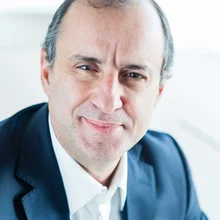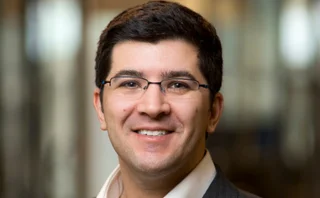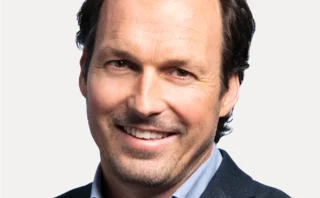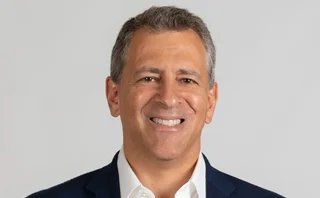
Electricity house of the year: Engie
Energy Risk Awards 2019: French utility positions itself to become a leader in green merchant activity

For Engie, winner of Energy Risk’s electricity house of the year, the direction the business is going in is clear: “Engie is in the middle of the energy transition,” says Mircea Caratas, chief commercial trading officer at Engie Global Markets. “The vision of Engie as a group is to become a carbon-neutral company by 2050.”
This is no mean ambition for the France-based utility that, as recently as 2015, boasted some 15 gigawatts (GW) of coal-fired generating capacity, representing 13% of its fleet, and whose current generation mix is more than 50% gas-fired.
“This is more than a strategy – it’s a vision,” says Caratas.
However, it is a vision that acknowledges the need to decarbonise the global economy if the world is to meet the climate goals set out in the 2015 Paris Agreement, and one that is based on clear market opportunities, explains Vincent Verbeke, its head of energy transition services.
“We see a tremendous opportunity to become a leader in green merchant activity,” says Verbeke. “We are positioning ourselves between asset developers and customers to facilitate the entry of renewable assets into the market as quickly and efficiently as possible and, in doing so, supply our customers with green electricity.”
That positioning is a function of three trends, he says: the rapidly falling cost of renewable power generation; strongly growing demand from Engie’s customers for green energy; and the withdrawal of subsidies for renewables, meaning that, rather than relying on government-guaranteed and predictable revenue streams, renewable energy assets need to earn their living in a much more uncertain market.
To match the preferences of its customers for clean energy with intermittent renewables, today’s energy company needs the “capability to optimise and manage different renewable energy assets but also have access to a diversified portfolio providing the flexibility to … fit the customer’s consumption profile,” says Verbeke. This has led Engie to develop a portfolio of hydro, batteries and demand response assets that can supplement wind and solar farms. “We believe we have a unique combination of capabilities to play a key role in the energy transition,” he adds.
Specifically, Verbeke says Engie’s role is evolving from that of a centralised, generation-driven utility to one that sits between a disaggregated landscape of asset developers on one side and consumers – or ‘pro-sumers’, who both produce and consume power – on the other.
On the supply side of the ledger, Engie has 8GW of renewable energy under management, either owned directly or contracted through power purchase agreements (PPAs) signed with developers. The company says its balance sheet allows it to offer longer-term PPAs than some of its competitors, citing its 25-year PPA with Hydro Energi, under which the aluminium producer is to buy the power generated by the 208 megawatts Project Tonstad wind farm in Norway – one of the longest PPAs written to date.
While corporate PPAs can provide some of the revenue certainty government-backed feed-in tariffs used to offer, the operators of renewable energy assets need to be able to tap into a range of different markets, says Verbeke. “We are able to access multiple market venues,” he says, not only the traditional wholesale markets, but also the physical imbalance and ancillary services markets that allow generators to earn payments for helping the system operator maintain grid stability.
We are positioning ourselves between asset developers and customers to facilitate the entry of renewable assets into the market as quickly and efficiently as possible
Vincent Verbeke, Engie
On the demand side, Engie is taking a more hands-on role with clients than has traditionally been the case with utilities, says Verbeke. For example, it has worked with Nestlé, a long-standing client, to help the Swiss consumer goods giant meet its sustainability commitments in what Engie describes as an “end-to-end approach to business greening”.
The project involved a comprehensive audit of two of Nestlé’s French production sites, providing a full view of their carbon footprint – covering its direct on-site emissions, indirect emissions related to power purchase and those related to its production chain. Solutions recommended to Nestlé by Engie included energy efficiency services aimed at reducing overall consumption, green PPAs, on-site green power generation and the purchase of green gas certificates.

While much of the innovation centres on Engie’s management and optimisation of generation and trading, it is also innovating on the client side to provide them with transparency and oversight of their consumption patterns. Specifically, Engie has developed The Energy Origin (TEO) platform, which uses blockchain technology to match and track a client’s energy consumption with energy generation.
The system takes the guarantees of origin system, which certifies green power production in Europe, to the next level, says Verbeke. “TEO allows our clients to see, in real-time, that their consumption at a particular site is 100% green. It’s a tool that helps them on their own energy transition journey,” he says. Last year, Air Products became the first of Engie’s customers to sign up to the platform. The utility is in talks with prospective clients in Europe, Asia and Latin America, Verbeke says.
As power generators and consumers alike come to terms with the energy transition, the value proposition represented by an intermediary such as Engie is becoming clear, says Caratas. “The role of the mid-streamer like us is [becoming] much more complex technology-wise, given the flexibility required…but also more important.”
Only users who have a paid subscription or are part of a corporate subscription are able to print or copy content.
To access these options, along with all other subscription benefits, please contact info@risk.net or view our subscription options here: http://subscriptions.risk.net/subscribe
You are currently unable to print this content. Please contact info@risk.net to find out more.
You are currently unable to copy this content. Please contact info@risk.net to find out more.
Copyright Infopro Digital Limited. All rights reserved.
As outlined in our terms and conditions, https://www.infopro-digital.com/terms-and-conditions/subscriptions/ (point 2.4), printing is limited to a single copy.
If you would like to purchase additional rights please email info@risk.net
Copyright Infopro Digital Limited. All rights reserved.
You may share this content using our article tools. As outlined in our terms and conditions, https://www.infopro-digital.com/terms-and-conditions/subscriptions/ (clause 2.4), an Authorised User may only make one copy of the materials for their own personal use. You must also comply with the restrictions in clause 2.5.
If you would like to purchase additional rights please email info@risk.net
More on Commodities
Energy Risk Asia Awards 2025: The winners
Winning firms showcase the value of prudent risk management amid challenging market conditions
Data and analytics firm of the year: LSEG Data & Analytics
Energy Risk Awards 2025: Firm’s vast datasets and unique analytics deliver actionable insights into energy transition trends
OTC trading platform of the year: AEGIS Markets
Energy Risk Awards 2025: Hedging platform enhances offering to support traders and dealers in unpredictable times
Electricity house of the year: Natixis CIB
Energy Risk Awards 2025: Bank launches raft of innovative deals across entire electricity supply chain
Voluntary carbon markets house of the year: SCB Environmental Markets
Energy Risk Awards 2025: Environmental specialist amplifies its commitment to the VCM
Sustainable fuels house of the year: Anew Climate
Energy Risk awards 2025: Environmental firm guides clients through regulatory flux
Weather house of the year: Parameter Climate
Energy Risk Awards 2025: Advisory firm takes unique approach to scale weather derivatives markets
Hedging advisory firm of the year: AEGIS Hedging
Energy Risk Awards 2025: Advisory firm’s advanced tech offers clients enhanced clarity in volatile times








